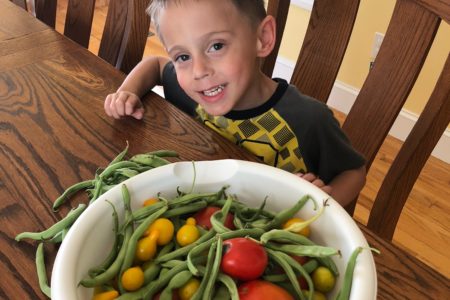Celebrating all mothers on Mother’s Day

The grief that may come to many on Mother’s Day
I wanted to take a minute and explain why I believe all mothers should be honored on Mother’s Day. It should be a joyous day, but it may not be for everyone. The weeks building up to it and the actual day can be difficult for many people. We are blessed enough to still have my mother and mother-in-law in our lives, but many people have lost their mothers, and mourn them even more on Mother’s Day. Many women have hopes of becoming a mother, but for whatever reason, often due to infertility or other complications, that dream has yet to be fulfilled. For many women, they mourn for their children that they were never able to meet alive or some have gone through the horrific tragedy of losing their child. A day that is meant to be joyful can quickly turn into a day that many may dread or have a hard time getting through.

The different types of mothers we need to honor
Many women may not have children of their own, but they may play the role of a mother. We also need to celebrate those women as well! You may be an aunt, a teacher, a mentor, or an amazing friend – remember, you mean so much to those children, do not take your role lightly, and celebrate it! You may be a step-mother and you are unsure of your place, but believe me, your role is incredibly important!
Being a step-mother
I officially became a mother to my step-daughter, Reece, when Josh and I got married in September of 2013. We have definitely had our ups and downs, but overall, we have a great relationship. Has it been difficult? Absolutely! Becoming a step-mom has been one of the most difficult experiences I have ever been through. I often feel as though I’m the first one to blame and the last one to thank. I care so much and I have the best intentions in mind, but I often feel that my opinion and role are second fiddle because I am just her step-mom.
Defining your role as a step-mother
I know some step-mothers struggle with which role they will play – will they be more of a friend or a mom. For me, I instantly took on the motherly role. Although, at the young age of 6, Reece gave me the line, “you’re not my mom” after I had scolded her one time very quickly. 🙂 I have always known that she may not like me in the moment, but I know that deep down she does love me. It brings me so much joy to see how kind, loving, and well-mannered she is – or at least as much as a thirteen year old can be 😉 She loves Jesus and is an amazing big sister! I feel blessed to have had an opportunity to play a small part in her life! Although it hasn’t been easy, I feel like we are better than we have ever been and I’m excited to see what our future holds!

William, my first born
William. He has taught me more than anyone in my life thus far! Throughout my pregnancy and since he took his first breath, nothing has been easy for him, but he has continued to persevere. He had to be emergently delivered at 23 4/7 weeks and weighed only 1 lb, 6 oz.
Living in the NICU – Living with no regrets
He is now a strong, funny, sarcastic, smart, shy, strong-willed, determined 5-year old. After 91 days in the NICU, we were able to bring him home. Once we walked out of those NICU doors, I was completely a different person and with an renewed sense of trust, faith, hope, and belief. I feel so blessed to be his mother. Josh used to get after me when William was in the NICU because I spent all of my waking hours sitting next to his isolette or holding him when I could. It was the most helpless feeling I have ever experienced. As a Mom, I wanted to protect him and I believed as though I had already failed him in that regard. I could not protect him in the womb, so I had told myself that I was going to sit there and fight the fight with him. If God forbid anything happened to him, I did not want to have any regrets. Considering everything he had to endure and for how hard he had to fight, the least I could do was sit there, pray with him, sing to him, love him, and support him.
My strong-WILLed 5 year old
William is doing remarkably well considering he was born so prematurely. There are still some things that are more difficult for him. It is hard to decipher what may be due to his prematurity versus him just being William. And in reality, it doesn’t really matter. But as a mother, to see your child struggle is incredibly difficult. All I have ever wanted to do is protect him and I can’t always do that, even now. He is definitely a little spoiled, but still so kind, incredibly strong-willed and he has such a big heart.

My personal struggle with miscarriages
After William, we waited awhile, but then decided to proceed with building our family. I became pregnant and Josh and I were cautiously optimistic. Just as in William’s pregnancy, my first trimester went by very smoothly. But as I entered into the second trimester, I quickly began to have problems that mimicked my pregnancy with William. Unfortunately, unlike William’s pregnancy, they were unable to stop the preterm labor and I delivered my son Weston at 14 weeks. That same year, I experienced another miscarriage in my 8th week of pregnancy. I think of the babies I lost EVERY. SINGLE. DAY, but Mother’s Day is extremely difficult for me.
If you have experienced a miscarriage or know someone who has, please visit HERE and listen to my conversation, Working Through Emotions After a Miscarriage with Julia Pascoe, LCSW.

Bereaved Mother’s Day
There is a day called International Bereaved Mother’s Day that is celebrated the week before Mother’s Day. It is dedicated to remember mothers who have either lost a child or have not been able to conceive. I like the idea of this, but at the same time, I also believe that these women should be honored on Mother’s Day. They are still mothers and always will be. Even if I was not lucky enough to have Reece or William, I would still be a Mama to Weston and Baby Nyberg.
So next year, please remember those who may struggle a little more on Mother’s Day. Talk to them about it and do not be afraid to tell them Happy Mother’s Day!












